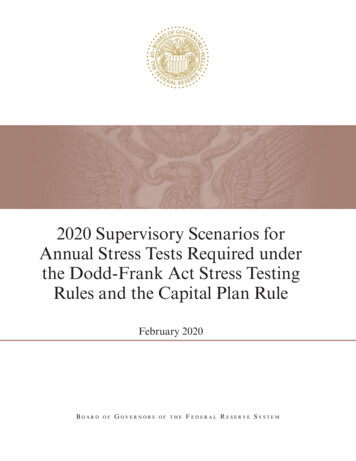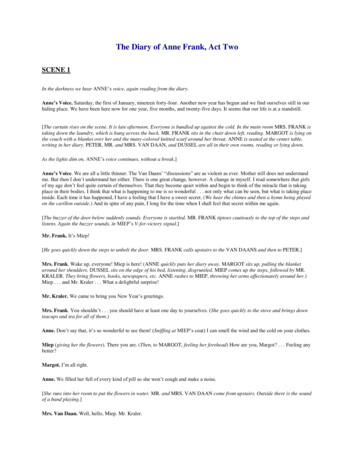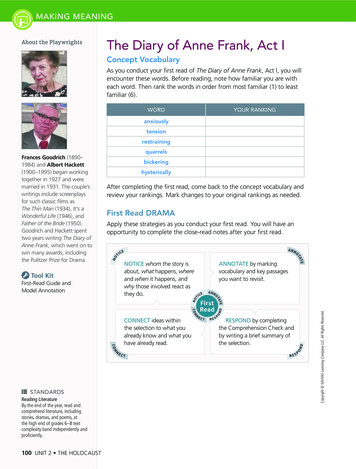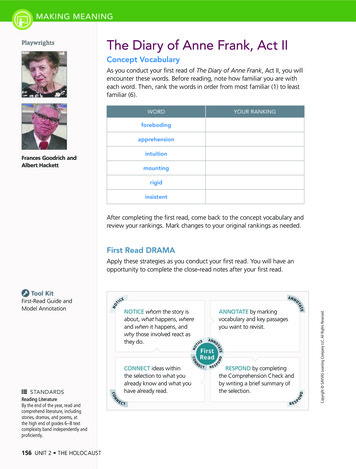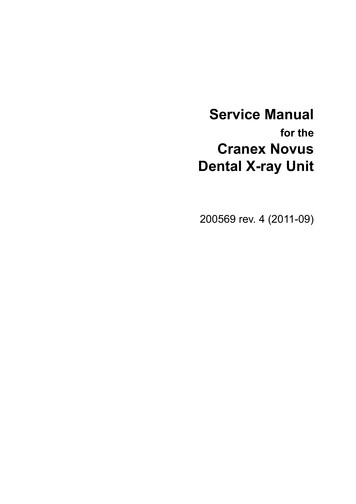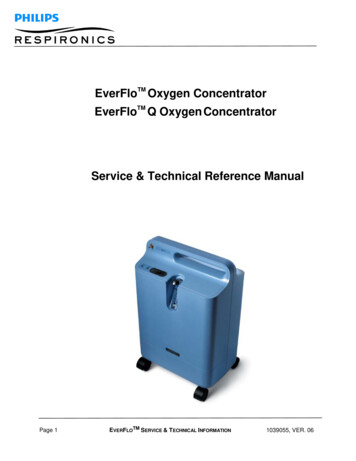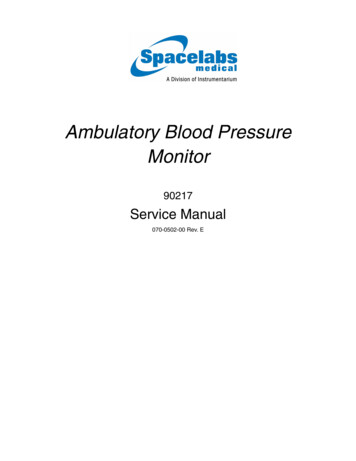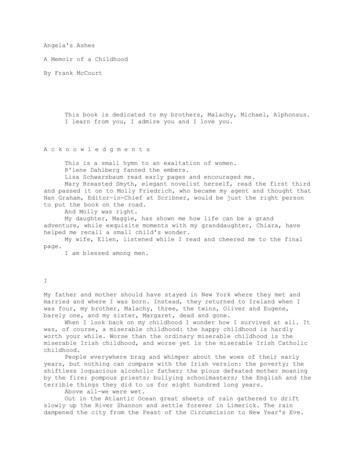
Transcription
The Dodd-Frank Act:a cheat sheetMorrison & FoersterMorrison 1 Foerster
THE DODD-FRANKWALL STREET REFORMAND CONSUMERPROTECTION ACT,OR DODD-FRANKACT, REPRESENTSTHE MOSTCOMPREHENSIVEFINANCIALREGULATORY REFORMMEASURES TAKENSINCE THE GREATDEPRESSION.Morrison 2 Foerster
The Dodd-Frank Act implements changes that, among otherthings, affect the oversight and supervision of financialinstitutions, provide for a new resolution procedure for largefinancial companies, create a new agency responsible forimplementing and enforcing compliance with consumer financiallaws, introduce more stringent regulatory capital requirements,effect significant changes in the regulation of over the counterderivatives, reform the regulation of credit rating agencies,implement changes to corporate governance and executivecompensation practices, incorporate the Volcker Rule, requireregistration of advisers to certain private funds, and effectsignificant changes in the securitization market. Although thelegislation calls for a number of studies to be conducted andrequires significant rule-making, we all will be required to beintimately acquainted with the Dodd-Frank Act.In the pages that follow, we summarize the principal aspects ofthe Dodd-Frank Act. As lawyers, we would reflexively say thatthis is a summary, and only a very brief summary at that, andthat all of this is qualified in its entirety by reference to our morecomplete (and far longer) descriptions and analyses .As peoplewho receive lots of summaries, we would say short is usuallybetter. We hope you’ll find these short summaries useful.
Financial Stability ReformNumerous government agencies areresponsible for regulating financial institutions.Commentators have noted that without agoverning body to oversee the various agencies,we remain vulnerable to regulatory gaps andoversight failures. The Dodd-Frank Act createsthe Financial Stability Oversight Council(“Council”) to oversee financial institutions.Creation of the CouncilDuties of the Council Chaired by Secretary of Treasury Collect information necessary to assessrisks to the U.S. financial system Voting members consist of heads ofthe Treasury, Federal Reserve, OCC,SEC, CFTC, FDIC, FHFA, NCUA, andthe Bureau of Consumer FinancialProtection (“Bureau”), as well as anindependent member with insuranceexpertise appointed by the President andconfirmed by the Senate Non-voting members include thedirector of the Office of FinancialResearch, the director of the FederalInsurance Office, a state insurancecommissioner, a state bankingsupervisor, and a state securitiescommissionerPurpose of the Council Identifying risks to U.S. financialstability that may arise from ongoingactivities of large, interconnectedfinancial companies as well asfrom outside the financial servicesmarketplace Provide direction to the Office ofFinancial Research to support the workof the Council Monitor the financial services marketplace and identify potential threatsto U.S. financial stability, as well asregulatory proposals affecting integrity,efficiency, competitiveness, and stabilityof the U.S. financial markets Facilitate information sharing andcoordination among member agenciesand other federal and state agencies Recommend to the member agenciesgeneral supervisory priorities andprinciples reflecting the outcome ofdiscussions among the member agencies Identify gaps in regulation that couldpose risks to the financial stability of theU.S. Promoting market discipline byeliminating expectations of governmentbailouts Require Federal Reserve supervisionfor nonbank financial companies thatmay pose risks to U.S. financial stabilityin the event of their material financialdistress or failure Responding to emerging threats tofinancial stability Review and submit comments to theSEC and any standard-setting bodyMorrison 4 Foerster
with respect to an existing or proposedaccounting principle, standard, orprocedure Provide a forum for discussionand analysis of emerging marketdevelopments and financial regulatoryissues, and to resolve jurisdictionaldisputes among members of the Council Provide an annual report and testimonybefore Congress regarding financialstability Recommend heightened prudentialstandards for nonbank financialcompanies and large, interconnectedbank holding companies supervised bythe Federal Reserveto standards established by the FederalReserveOther Creates the Office of Financial Research,which will support the Council throughdata collection and research Financial companies and nonbankfinancial companies can appeal Councilrequirement to implement stricterstandards Council must conduct a study onfeasibility, benefits, costs, and structureof a contingent capital requirement fornonbank financial companies Council must make recommendationsto the Federal Reserve and other federal Recommend to primary financialregulators regarding concentrationregulatory agencies new or heightenedlimits, public disclosures, creditstandards and safeguards for activitiesexposure, maintenance of long-termthat increase risks of significant liquidity,hybrid debt convertible to equity andcredit, or other problems spreadinggeneral financial information reportsamong bank holding companies, If the applicable agency chooses notnonbank financial companies, and U.S.to implement any recommendationfinancial marketsprovided by the Council, it must provide Identify systemically important financiala report explaining its rationalemarket utilities and payment, clearing,and settlement activities, and requiresuch utilities and activities to be subjectMorrison 5 Foerster
Agencies and Agency Oversight ReformThe various government agencies regulatingthe financial industry with their varying rulesand standards led to certain entities not beingregulated at all, with others subject to lessoversight than their peer financial firms organizedunder different charters. The Dodd-Frank Actoverhauls the existing agency oversight system asdescribed below.Major Agency Changes Creation of the Financial StabilityOversight Council (Council) Creation of the Office of FinancialResearch within the Treasury to supportthe Council Creation of an independent Bureau ofConsumer Financial Protection (Bureau)within Federal Reserve Creation of the Office of NationalInsurance within the Treasury Creation of the Office of Credit RatingAgencies within the SECMajor Changes in Agency Oversight Federal Reserve will regulate thriftholding companies and subsidiaries ofthrift holding companies, and will haveall rulemaking authority relating to thriftholding companies; Federal Reserve willcontinue to regulate State member banks The OCC will regulate national banksand federal thrifts of all sizes, and willhave all rulemaking authority relating tothrifts The FDIC will regulate state thrifts of allsizes The OTS will be eliminated, all OTSfunctions, powers, authorities, rights andduties will be transferred to the FederalReserve, the OCC, or the FDIC The SEC will require registration ofhedge funds that manage over 100million as investment advisers; thresholdfor investment advisers subject to federalregulation to be raised from 25 millionto 100 millionMorrison 6 Foerster
The SEC will require registration ofmunicipal financial advisers, swapadvisers and investment brokers;Municipal Securities Rulemaking Boardrules to be enforced by the SECOtherrequired to periodically submit “livingwills” to regulators in the event offinancial distress Federal Reserve will be subject to a onetime GAO audit of the Federal Reserve’slending facilities Regulators will be required to implementregulations that prohibit banks,bank holding companies and certainnonbank financial institutions fromproprietary trading and investments andsponsorships of hedge funds and privateequity funds Federal Reserve will have rulemaking authority (and will act uponrecommendations of the Council)with respect to rules prohibitingproprietary trading and investments andsponsorships of hedge funds and privateequity funds Large complex companies will beMorrison 7 Foerster
Securitization ReformThe final shape of securitization reform isbeginning to gel. In addition to the changeseffected by the Dodd-Frank Act, the SEC recentlyreleased a 667-page proposed rule amendingRegulation AB’s registration, disclosure, andreporting requirements for asset-backed securitiesand other structured finance products. Andthe FDIC released a proposed rule amendingits “securitization rule” safe harbor to requirefinancial institutions to retain more of the creditrisk from securitizations and reflect recentaccounting changes. This was preceded by theFASB’s revisions to accounting rules relatingto sales of financial assets and consolidation ofcertain off-balance sheet entities, revisions to bankcapital rules to reflect FASB’s accounting changesand the enactment of the Hiring Incentives toRestore Employment Act, which imposes a 30%withholding tax on foreign financial institutions,including certain offshore securitization vehicles.Morrison 8 Foerster
The major elements of securitization reform are:Credit Risk Retention 5% to be retained by the securitizer;however, if originator retains someamount of risk, only the remaining risk(up to 5% total) will be allocated tosecuritizer Risk retention also to apply to CDOs,securities collateralized by CDOs andsimilar instruments Risk retention types, forms andamounts for commercial mortgages tobe determined by regulators, includingpermitting a third party that purchasesa first-loss position at issuance andwho holds adequate financial resourcesto back losses substituting for the riskretention requirement of the securitizerloan brokers or originators, the natureand extent of the compensation ofthe broker or originator of the assetsbacking the security, and the amountof risk retention of the originator orsecuritizer of such assets Fulfilled and unfulfilled repurchaserequests across all trusts will beaggregated by the originator, so investorsmay identify originators with clearunderwriting deficiencies Due diligence analysis must beperformed by securitizer and provided toinvestorsRepresentations and Warranties Other exemptions will be available atregulators’ discretion Credit rating agencies must explain, inreports accompanying credit ratings,representations, warranties, andenforcement mechanisms availableto investors and how they differfrom representations, warranties andenforcement mechanisms in similarissuances No hedging or transfer of riskOther Creation of different asset classes, whichmay be subject to different regulations Regulations relating to credit riskretention requirements will becomeeffective one year from enactmentfor residential mortgage assets, andwill become effective two years fromenactment for all other asset classes Percentage retained can be loweredbased on underwriting standards used An exemption for qualified residentialmortgagesRequired Disclosures Asset-level or data-level detail, includingdata with unique identifiers relating toMorrison 9 Foerster
Derivatives RegulationTitle VII of the Dodd-Frank Act, to be known asthe Wall Street Transparency and AccountabilityAct of 2010, will impose a comprehensive andfar-reaching regulatory regime on derivativesand market participants. Major elements of TitleVII are summarized below.1 However, manysections of Title VII require various studies to beundertaken and mandate or permit significantrulemaking by the Commodity Futures TradingCommission (“CFTC”), the Securities andExchange Commission (“SEC”), and variousFederal banking regulators. As a result, a fullassessment of the impact of Title VII will only bepossible once that rulemaking advances.Unless otherwise specified, for convenience we refer to swaps and security-based swaps as “swaps,” swap dealers and security-based swap dealers as “swapdealers,” and major swap participants and major security-based swap participants as “major swap participants” or “MSPs.” We also use the term “applicableregulator” to refer to the CFTC, in the case of swaps, and the SEC, in the case of security-based swaps. For a description of the Act’s prohibition on proprietarytrading, please see our separate summary of the Volcker Rule.1Morrison 10 Foerster
Lincoln Provision (the “Swaps Pushout”Rule)be physically settled, futures contracts,listed FX options, debt securities,securities options and forwards thatare subject to the Securities Act of1933 (“33 Act”) and the SecuritiesExchange Act of 1934 (“34 Act”), andsecurity-based swaps. FX swaps andFX forwards qualify as swaps, unlessthe Secretary of the Treasury determinesotherwise; however, notwithstanding anysuch determination, all FX swaps andFX forwards must be reported to a swapdata repository or, in the absence of one,to the applicable regulator, and swapdealer and MSP counterparties to FXswaps and FX forwards must conform tobusiness conduct standards applicable toswap dealers and MSPs. No “Federal assistance” (e.g., advancesfrom any Federal Reserve credit facilityor discount window that is not part of abroad-based eligibility program, FDICinsurance, or guarantees) may be providedto any “swaps entity” (i.e., swap dealersand non-bank major swap participants, orMSPs). The prohibition does not apply to insureddepository institutions that limit theirswap activities to (i) hedging and othersimilar risk mitigating activities directlyrelated to their activities and (ii) engagingin swaps involving rates or referenceassets that are permissible for investmentby national banks. For purposes of theexception in clause (ii), CDS is permissibleonly if cleared. The prohibition only applies to swapsentered into after the end of the transitionperiod, which could be up to five yearsafter enactment.Regulatory Framework and KeyDefinitions The Act creates parallel regulatory regimesfor the CFTC and SEC and dividesjurisdiction between the two regulatorsbased on whether a “swap” or a “securitybased swap” is involved. The CFTC willhave jurisdiction over “swaps” and certainswap market participants, and the SECwill have jurisdiction over “security-basedswaps” and certain security-based swapmarket participants. Banking regulatorswill retain jurisdiction over certainaspects of banks’ derivatives activities(e.g., capital and margin requirements,prudential requirements). Swap. This term is broadly definedto include many types of derivativesacross various asset classes, but excludes,among other things, nonfinancial orsecurity forwards that are intended toSecurity-based Swap. A “securitybased swap” is a swap on a singlesecurity or loan or a narrow-basedsecurity index (generally, an index with9 or fewer component securities). Thedefinition also includes credit defaultswaps relating to a single issuer or theissuers in a narrow-based security index. The Act creates two new categories ofsignificant market participants: swapdealers and major swap participants. Swap Dealer. A “swap dealer” isany person who holds itself out as adealer in swaps, makes a market inswaps, regularly enters into swaps withcounterparties as an ordinary course ofbusiness for its own account, or engagesin any activity causing the person tobe commonly known in the trade as adealer or market maker in swaps. Theterm excludes persons that enter intoswaps for their own account, eitherindividually or in a fiduciary capacity,but not as a part of a regular business. Italso does not include insured depositoryinstitutions that offer to enter into swapswith their customers in connection withoriginating loans with those customers.Morrison 11 Foerster
Derivatives Regulation (continued)The Act requires the CFTC and SEC toprescribe a de minimis exception to beingdesignated as a swap dealer. category, type, or class of swaps. Major Swap Participant. A “majorswap participant” (“MSP”) is any personwho is not a swap dealer and: Maintains a “substantial position”(to be defined by the applicableregulators) in swaps for any majorswap category, excluding positionsheld for hedging or mitigatingcommercial risk and positionsmaintained by any employee benefitplan for the primary purpose ofhedging or mitigating any riskdirectly associated with the operationof the plan; Whose outstanding swaps createsubstantial counterparty exposurethat could have serious adverse effectson the financial stability of the U.S.banking system or financial markets;or Is a financial entity that is highlyleveraged relative to the amount ofcapital that it holds, is not subjectto any Federal banking agency’scapital requirements, and maintains a“substantial position” in outstandingswaps in any major swap category.Certain captive finance affiliates ofmanufacturers that use swaps to hedgecommercial risks relating to interest rateand FX exposures are excluded from thedefinition of major swap participant.Clearing and Trading Requirements Mandatory Clearing. A swap mustbe cleared if the applicable regulatordetermines that it is required to be clearedand a clearing organization accepts theswap for clearing. Mandatory clearing requirement willnot apply to existing swaps if they arereported to a swap data repository or,if none, to the applicable regulator in atimely manner. Commercial End User Exception.The Act provides an exception to themandatory clearing requirement if one ofthe counterparties to the swap (i) is nota financial entity, (ii) is using swaps tohedge or mitigate commercial risk, and(iii) notifies the applicable regulator howit generally meets its financial obligationsassociated with entering into non-clearedswaps. Application of the exception is atthe sole discretion of the commercial enduser. The term “financial entity” includesswap dealers, MSPs, commoditypools, private funds (as defined in theInvestment Advisers Act of 1940),employee benefit plans, and personspredominantly engaged in activitiesthat are in the business of bankingor in activities that are financial innature, but excludes certain captivefinance affiliates. The Act directsthe applicable regulators to considerwhether to exempt small banks,savings associations, farm credit systeminstitutions, and credit unions. Mandatory Trade Execution. To theextent that a swap must be cleared, itmust be executed on an exchange or swapexecution facility, unless no exchange orswap execution makes the swap availablefor trading. Non-ECPs. Persons who are not eligiblecontract participants (“ECPs”) mustalways enter into swaps via an exchange.The determination process may beinitiated by the applicable regulator orby a clearing organization, and mayrelate to any single swap or any group,Morrison 12 Foerster For swaps, the illegality applies to thenon-ECP. For security-based swaps, the illegalityapplies to any person effecting thetransaction with or for the non-ECP.
Regulation of Swap Dealers and MajorSwap Participants Registration. Swap dealers and MSPsmust register as such and will be subjectto a regulatory regime that will be defined,to a very large extent, by rulemaking.Registration is required with an applicableregulator regardless of whether the entityis registered with the other applicableregulator or is a depository institution. Capital and Margin. The applicableregulators (for non-banks) and theFederal banking regulators (for banks)will set minimum capital requirementsand initial and variation marginrequirements for swap dealers and MSPs. To offset the “greater risk” of noncleared swaps, the capital and marginrequirements must help ensure thesafety and soundness of the swapdealers and MSPs and be appropriatefor the risk associated with the noncleared swaps held by those entities. The Act permits the use of noncashcollateral and, for non-cleared swaps,requires swap dealers and MSPsto hold their counterparties’ initialmargin, upon request, in a segregatedaccount at an independent third partycustodian. The Act does not provide anexemption to the margin requirementsfor commercial end users, altho
Lincoln Provision (the “Swaps Pushout” Rule) No “Federal assistance” (e.g., advances from any Federal Reserve credit facility or discount window that is not part of a broad-based eligibility program, FDIC insurance, or guarantees) may be provided to any “swaps entity” (i.e., swap dealers and non-bank major swap participants, or
